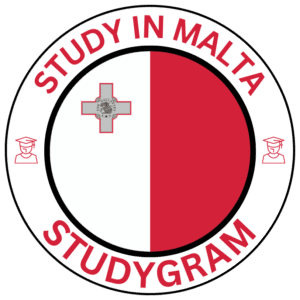
Understanding the Science Behind the Collapse
On the night of 26–27 March 2025, a segment of the cliff face near St Peter’s Pool, located on Malta’s Delimara Peninsula, slid down abruptly, sending large boulders and debris into the rocks below. While the event’s visual impact was immediately obvious, the exact timing and propagation of the failure required precise seismic observation. The University of Malta’s Seismic Monitoring and Research Group, housed within the Department of Geosciences, used an array of seismic stations to record the waves generated by the collapse and to determine its exact moment of occurrence.
Triangulation: How Seismics Pinpoint an Event
Each of the three stations that detected the collapse—XROBB L‑GħAQIN (XROB), WIED DALAM (WDD), and ĦAġAR QIM TEMPLES (HQIM)—recorded the arrival time of the seismic wave. By feeding the arrival times, station coordinates, and the known velocity of seismic waves through the local limestone into a triangulation algorithm, the researchers were able to compute the source coordinates and the event’s start time. The analysis determined that the rockfall began at approximately 23:43 local time on the evening of 26 March.
This precise timing is crucial for several reasons: it allows hazard professionals to cross‑reference the event with weather records, assess any triggering mechanisms, and refine models of cliff stability for the Delimara Peninsula.
Why Continuous Seismic Monitoring Matters for Malta
Malta’s coastline, including the Delimara Peninsula, is built largely on Middle and Upper Globigerina limestone. These formations are prone to erosion and sudden rockfalls, especially during periods of heavy rainfall or seismic activity. Continuous monitoring provides:
- Early warning for local communities and tourists who frequent beaches such as St Peter’s Pool.
- Data for civil engineers to design safer pathways and protective structures.
- Baseline records that help scientists track changes in cliff behaviour over time.
The 2025 collapse demonstrates how even a “minor” rockfall can have a cascading effect: large boulders tumbling into shallower waters can damage marine infrastructure, alter local ecosystems, or even pose hazards to beachgoers.
Impact on the Local Community and Tourism
St Peter’s Pool is a popular recreational site, attracting both local residents and tourists. The cliff collapse not only raised safety concerns but also temporarily disrupted access to the beach. Local authorities have since tightened regulations around cliffside walking paths and increased signage indicating risky zones.
For 2024, a survey conducted by the Department of Geosciences found that 68 % of local residents felt more anxious about visiting popular coastal spots, emphasizing the need for public transparency regarding monitoring results.
Balancing Development and Safety
With Malta’s growing tourism infrastructure, coastal development projects must now negotiate the delicate balance between economic benefit and geohazard mitigation. By integrating real‑time seismic data into planning approvals, developers can adjust building placements to avoid high‑risk zones.
How Students and Researchers Can Get Involved
The University of Malta offers a range of courses and research opportunities that cater to students interested in geosciences, civil engineering, and environmental management. The Seismic Monitoring and Research Group invites undergraduate and postgraduate students to contribute to fieldwork, data analysis, and the development of public outreach materials.
Students can apply for research internships, join data‑collection campaigns, and present findings at annual conferences. Those interested in a career focused on coastal hazard mitigation can explore a B.Sc. in Geoscience or an M.Sc. specializing in Seismology.
Upcoming Workshops and Seminars
In the coming months, the Department will host a series of workshops on seismology data interpretation and hazard communication. Interested parties can find details and register via the University’s research portal at https://www.um.edu.mt/research/.
What’s Next for Seismic Monitoring in Malta?
Following the 2025 event, the monitoring network will expand to include additional stations near other vulnerable cliffs, such as the Gżira Coast and the South Coast of Gozo. The goal is to achieve a denser and more robust dataset that will feed predictive models and help authorities implement proactive measures.
Researchers are also exploring the integration of satellite imagery and remote sensing data with ground‑based seismic information to refine risk assessments.
Engaging the Public: From Reports to Action Plans
Public understanding is a cornerstone of effective hazard mitigation. The university’s geoscience team publishes monthly summaries of seismic activity on its website and hosts community Q&A sessions.
These outreach efforts translate complex technical data into actionable insights, such as recommended walking times for beach visitors during certain weather conditions.
How You Can Stay Informed and Safe
Stay updated on real‑time seismic activity and potential hazards by visiting the UoM Seismic Monitoring page. For those traveling to Malta, consult the updated travel advisories and local beach safety guidelines.
Share Your Concerns and Feedback
Questions or comments about the recent cliff collapse or how the university’s monitoring can help your community are welcomed. Please contact the Department of Geosciences through the university’s outreach channels.
Call to Action: Explore Opportunities in Geoscience
Interested in the intersection of geology and public safety? Explore the geoscience programs offered by the University of Malta to gain the knowledge and experience needed to contribute to coastal hazard mitigation.
Students and researchers looking to make a direct impact are encouraged to apply for a research internship with the Seismic Monitoring and Research Group. Submit your application today.
For a deeper understanding of the science behind rockfalls and how they affect tourism and local communities, read related research projects on the university’s Newspoint portal.
Join the conversation by sharing your experiences or questions in the comments section below. Your input helps shape future research directions and public policy.
Finally, keep your loved ones safe by staying informed: follow the University of Malta’s updates on social media, and check official channels for any beach advisories before visiting popular coastal spots like St Peter’s Pool.

